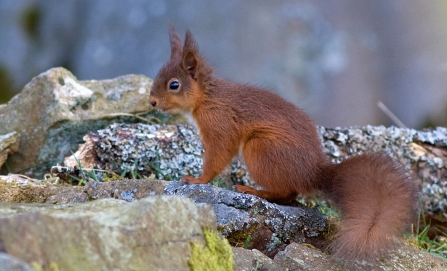
Red Squirrel. Image by: Steve Wrightson.

Red Squirrel. Image by: Steve Wrightson.
Once again, over 170 people were involved in this massive citizen science project surveying woodlands and gardens across the north of England between March and May. 86% of surveys were carried out by volunteers.
The surveys involved a mix of trail cameras, feeders in gardens and walks through forests to record squirrels spotted.
In addition, the programme also gathered data from multiple sources: sightings reported by the public, RSNE staff and records submitted by local squirrel groups.
Results were positive overall, with red squirrels recorded in 43% of sites - a 1% rise on last year’s result. Grey squirrels were found in 46% of sites, down 2% compared to 2018.
The team was able to produce a red squirrel distribution map which pinpoints records of reds in 440 2 x 2km squares within the three month period, filling in gaps in distribution.
A full copy of the report and a summary can be viewed at rsne.org.uk/squirrel-monitoring-programme.
The surveys take place in ‘red squirrel counties’ across northern England, where wild red squirrels can still be found: in Cumbria, Northumberland, Tyne & Wear, North Yorkshire, Lancashire, Merseyside and parts of County Durham.
Surveys are completed within areas where red squirrel conservation is carried out by project teams, such as Red Squirrels Northern England, and by local community red squirrel groups under the banner of Northern Red Squirrels.
Simon O’Hare, Project Manager for Red Squirrels Northern England, has hailed the result as another positive for red squirrels. He says: “The overall strength of the monitoring is in the sheer number of surveys, and the repeatability: same time, same place each year, giving us confidence in the results, and once again the number of sites where reds were seen remained stable, very similar to last year. Although we see ups and downs in results across the regions, over time we are seeing red range maintenance, which is really encouraging.
“However, it is vital that we do not see a drop in conservation effort, and in fact, there are many areas were we need more effort, more resources, and more people involved. Over the last eight years results from the annual surveys show that what we are collectively doing to protect reds in the north of England is working, but it needs to be long-term. We need to secure continued support if we are to continue to protect reds”
Grey squirrels out-compete reds for food and carry a fatal virus, squirrelpox virus, which they are immune to. Over 99% of reds known to catch the virus die within two weeks.